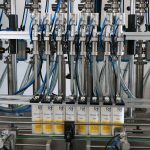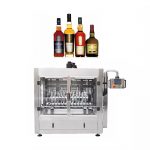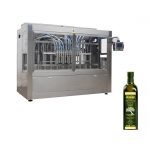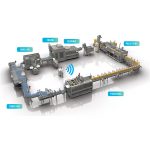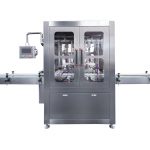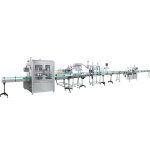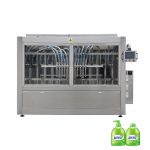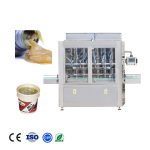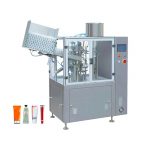What is cream filling machine?
A cream filling machine is a piece of equipment that is used to fill containers with cream or other thick, viscous products. These machines are commonly used in the food industry to package products such as frosting, whipped cream, and spreads.
There are several types of cream filling machines available, including piston fillers, gravity fillers, and volumetric fillers. Piston fillers use a reciprocating piston to dispense the product, while gravity fillers use the force of gravity to dispense the product. Volumetric fillers dispense a specific volume of product based on the size of the filling nozzle.
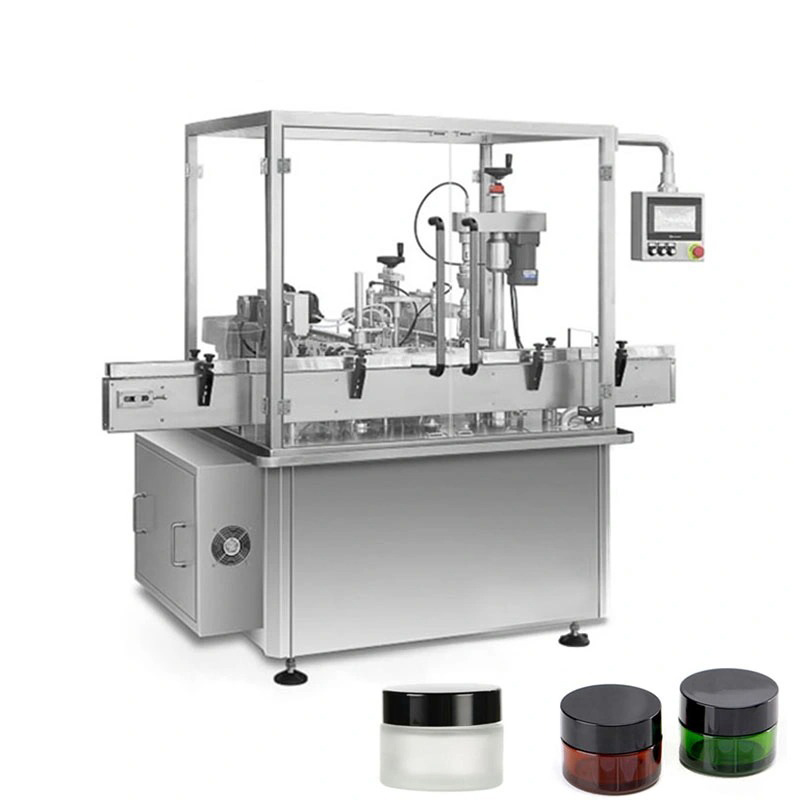
Cream filling machines can be used to fill containers of various sizes and shapes, including tubes, bottles, and jars. They can be configured to dispense a wide range of fill volumes, from small amounts for individual servings to large quantities for bulk packaging.
Cream filling machines are typically made of stainless steel or other food-grade materials to ensure food safety and hygiene. They may also be equipped with features such as nozzles and spouts to help control the flow of product, as well as conveyor belts to move containers through the filling process.
Overall, cream filling machines are an important tool in the food industry for efficiently and accurately packaging products such as cream, frosting, and spreads.
What is cream?
Cream is a dairy product that is made from the high-fat content that rises to the top of milk. It is typically made from cow's milk, but it can also be made from the milk of other animals such as goats or sheep. Cream is produced by skimming off the top layer of milk and separating it from the rest of the milk using a centrifuge or gravity.
There are several types of cream, including heavy cream, light cream, and whipped cream. Heavy cream, also known as heavy whipping cream, is the most concentrated form of cream and has a fat content of at least 36%. Light cream, also known as coffee cream or table cream, has a fat content of around 18-30%. Whipped cream is made by beating heavy cream until it becomes thick and fluffy.
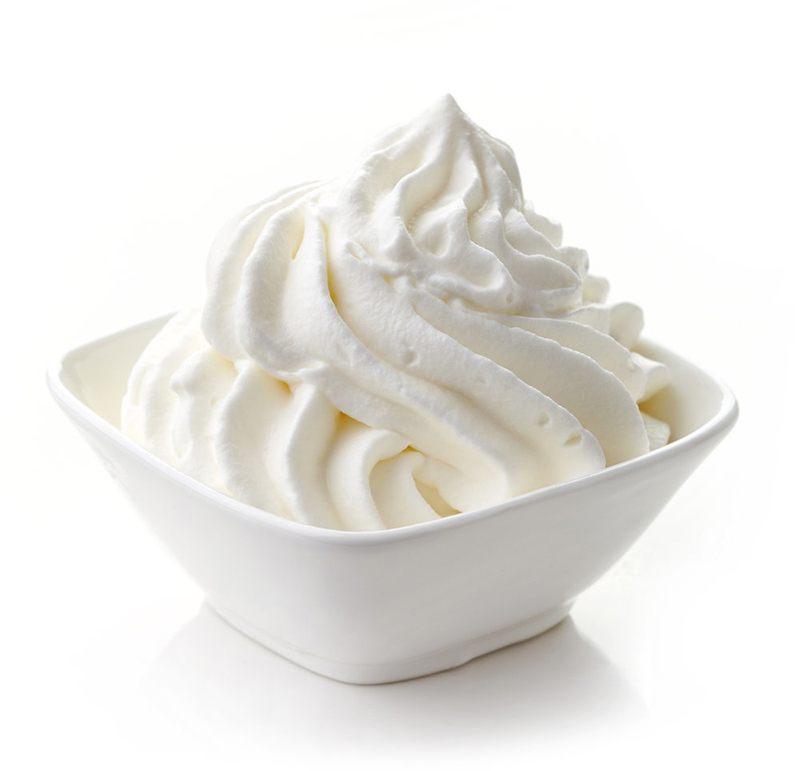
Cream is used in a wide range of food products, including soups, sauces, desserts, and baked goods. It is also commonly used as a topping for fruits, coffee, and other beverages. In addition to its culinary uses, cream is also used in the production of cosmetics, pharmaceuticals, and other non-food products.
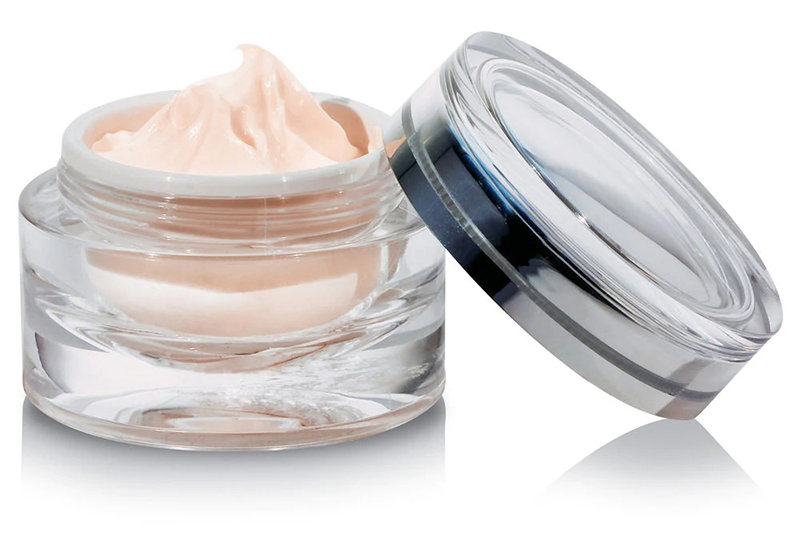
What are the common packaging cream containers?
There are several types of packaging containers that are commonly used for cream products, including:
Glass jars: Glass jars are a popular choice for packaging cream products such as facial creams and body lotions. They offer a high-quality, professional look and can be easily sterilized for reuse.
Plastic bottles: Plastic bottles are a lightweight and convenient option for packaging cream products. They are widely available in a range of sizes and shapes, and can be easily recycled or repurposed.
Tubes: Tubes are a popular choice for packaging products such as toothpaste, hand cream, and other personal care products. They are easy to use and can be squeezed to dispense the product.
Cartons: Cartons are often used for packaging liquid cream products such as whipping cream and sour cream. They are generally made of paperboard and are easy to open and close.
Pouches: Pouches are a flexible packaging option that can be used for a variety of cream products. They are easy to store and can be easily opened and closed using a zip-top seal.
Overall, the type of packaging container used for cream products will depend on the specific product and its intended use.
How to choose cream filling machine?
There are several factors to consider when choosing a cream filling machine, including:
Product viscosity:
The viscosity of the cream or other product being filled will affect the type of filling machine that is most suitable. For example, products with high viscosity may require a piston filler or volumetric filler, while products with lower viscosity may be more suited to a gravity filler.
Container size and shape:
The size and shape of the containers being filled will also affect the type of filling machine that is needed. For example, a machine that is designed to fill small tubes may not be suitable for filling large bottles.
Filling accuracy:
The accuracy of the filling process is important to ensure consistent product quality and prevent waste. Consider the level of precision required for your product and choose a machine that is capable of meeting your filling accuracy needs.
Speed:
The speed of the filling process is an important factor to consider, particularly if you are filling a large volume of product. Consider the output rate that is required for your production needs and choose a machine that is capable of meeting those needs.
Ease of operation:
The ease of operation of the filling machine is also an important consideration, particularly if you are new to using this type of equipment. Look for a machine that is easy to set up and use, and that is user-friendly.
Overall, it is important to carefully consider your specific needs and requirements when choosing a cream filling machine to ensure that you select the most suitable equipment for your needs.
What are the types of cream filling machine?
There are several types of cream filling machines available, including:
Piston fillers:
Piston fillers use a reciprocating piston to dispense the product. They are suitable for filling products with high viscosity and can be used to fill containers of various sizes and shapes.
Gravity fillers:
Gravity fillers use the force of gravity to dispense the product. They are suitable for filling products with lower viscosity and are typically used to fill containers with a high volume of product.
Volumetric fillers:
Volumetric fillers dispense a specific volume of product based on the size of the filling nozzle. They are suitable for filling products with consistent viscosity and are typically used for filling containers with a medium to high volume of product.
Time-pressure fillers:
Time-pressure fillers dispense the product based on a fixed time interval. They are suitable for filling products with consistent viscosity and are typically used for filling containers with a medium to high volume of product.
Weight-based fillers:
Weight-based fillers dispense the product based on the weight of the container. They are suitable for filling products with consistent viscosity and are typically used for filling containers with a medium to high volume of product.
Overall, the type of cream filling machine that is most suitable will depend on the specific needs and requirements of the application.
How does the cream filling machine work?
The operation of a cream filling machine typically involves the following steps:
Preparation:
The containers to be filled are typically placed on a conveyor belt or other transportation system and transported to the filling station. The product to be filled is also prepared and made ready for filling.
Filling:
The filling process begins when the containers reach the filling station. The machine dispenses the product into the containers using a filling nozzle, spout, or other dispensing mechanism.
Sealing:
After the containers have been filled, they are typically sealed to prevent contamination and to ensure the product remains fresh. This may involve capping the containers or applying a lid or closure.
Labeling:
After the containers have been sealed, they are typically labeled with information such as the product name, ingredients, and expiration date.
Packaging:
After the containers have been labeled, they are typically placed into boxes or other packaging materials for storage or shipping.
Overall, the operation of a cream filling machine involves a series of steps to ensure that the product is accurately and efficiently filled and packaged for distribution.
What are the advantages of cream filling machine?
There are several advantages to using a cream filling machine, including:
Increased efficiency:
Cream filling machines are designed to fill containers quickly and accurately, which can increase the overall efficiency of the filling process.
Improved accuracy:
Cream filling machines are typically more accurate than manual filling methods, which can help to reduce waste and improve product quality.
Reduced labor costs:
Using a cream filling machine can help to reduce labor costs as it reduces the need for manual labor in the filling process.
Enhanced safety:
Cream filling machines are equipped with safety features to protect workers from injury, which can help to improve workplace safety.
Increased production capacity:
Cream filling machines are capable of filling a high volume of containers in a short period of time, which can increase production capacity.
Overall, using a cream filling machine can help to improve efficiency, accuracy, and safety in the filling process, while also increasing production capacity and potentially reducing labor costs.
Customize your cream filling line
There are several ways to customize a cream filling line to meet the specific needs and requirements of your business:
Choose the right filling machine:
Select a filling machine that is suitable for the type and viscosity of the cream being filled, as well as the size and shape of the containers being used.
Configure the filling machine:
Many filling machines can be configured to fill different volumes and dispense product in different ways. Choose the configuration that is most suitable for your needs.
Add additional equipment:
Depending on your specific needs, you may want to consider adding additional equipment to your filling line. This could include things like conveyor belts, labeling machines, or packaging equipment.
Customize the layout:
Consider the layout of your filling line and how it can be optimized for efficiency and productivity. This may involve rearranging the placement of equipment or adding additional stations.
Implement automation:
Automation can help to improve efficiency and reduce the need for manual labor. Consider adding automation to your filling line to help streamline the process.
Overall, customizing a cream filling line involves considering the specific needs and requirements of your business and making appropriate equipment and layout choices to optimize the filling process.

